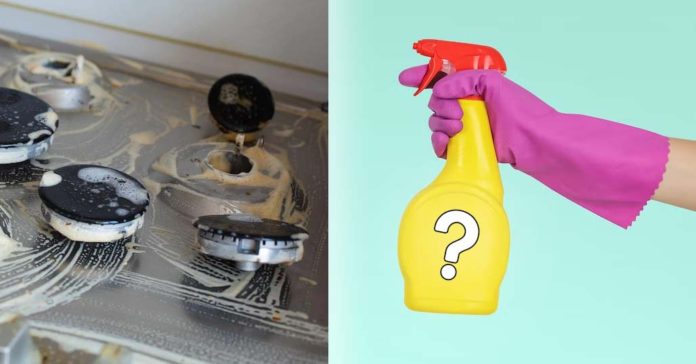Here are a few simple methods on how to safely and quickly remove the nasty grease residue from your stove top. Sticky solidified grease can be a real pain if you let it linger on your stove top for too long. Don’t fear however, as there are quite a few tricks that can help you with quick and simple grease removal. Some of these methods can even apply to your other kitchen appliances, making your life much easier. Keep on reading!
- How to clean grease from a stove top?
- The most common grease removal method
- Baking soda and vinegar
- Trisodium phosphate (TSP) solution
- The last resort – the razor blade method
- Stove top grease cleaners / grease removers
- How to easily protect your stove top from grease residue?
This web portal is supported by its readers, and is a part of the Amazon Services LLC Associates Program and the eBay Partner Network. When you buy using links on our site, we may earn an affiliate commission!
How to clean grease from a stove top?
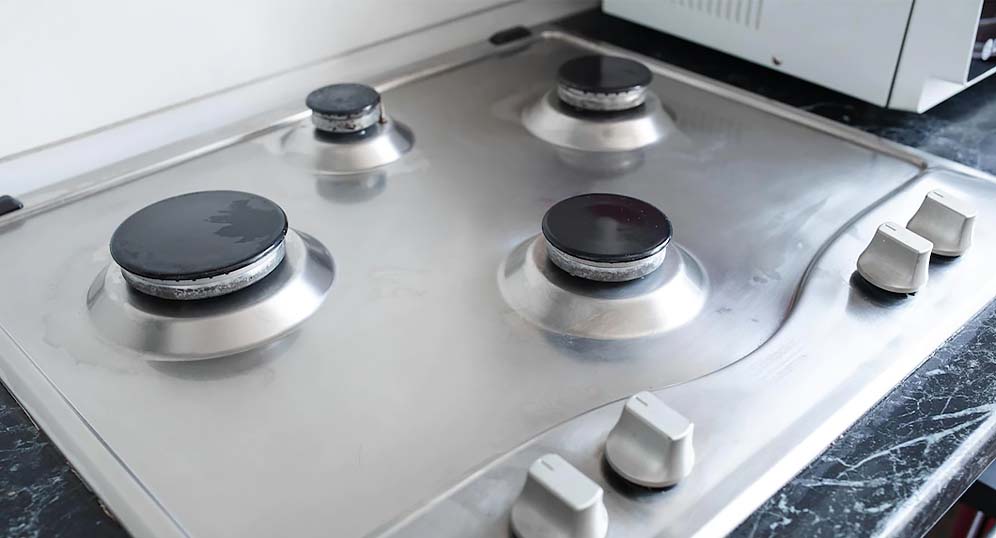
Grease by definition is either animal fat used or produced during cooking, or a prepared kitchen oil with an added thickener. While oils in a room temperature stay in their liquid state, greases will solidify – and most of the time that’s exactly what causes the dark greasy mess around the stove top that we’re trying to clean up here.
The solidifying of grease is also one of the reasons why pouring hot grease into your kitchen sink is a very bad idea – it will easily take solid form in your plumbing and can cause hard to reverse damage to the pipes in your home or apartment.
There are quite a few methods to clean the leftover grease from your stove top, let’s review the most efficient ones, starting from the simplest one.
If you’re in a hurry and you want to skip straight to the commercial grade grease removers click here – for a few dollars you can get a bottle of an efficient grease remover that will make the cleanup process even faster.
The most common grease removal method
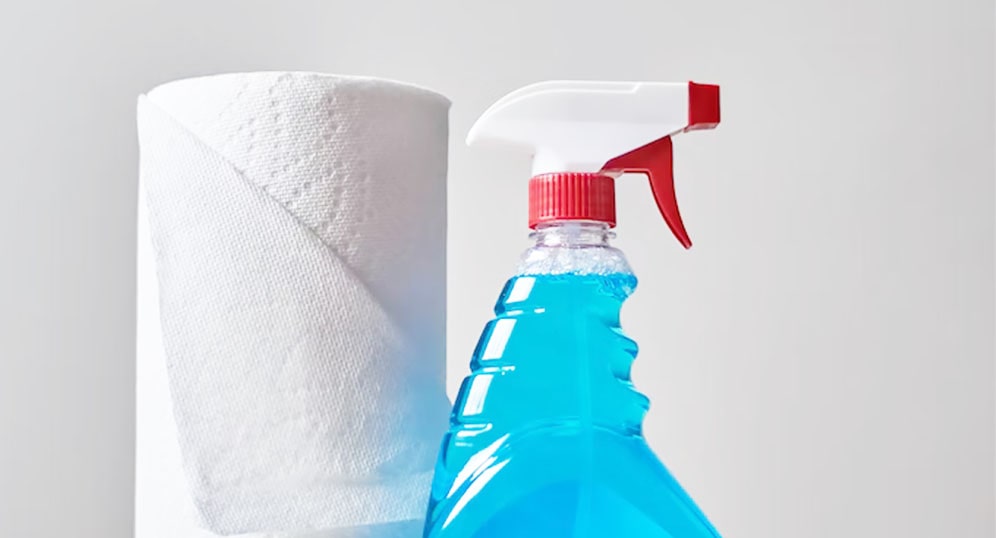
The very first method might not be the most efficient one, but it does well if the grease situation near your stove top isn’t that severe.
Grab a cloth and dampen it in a mixture of water and a few drops of your chosen dish soap solution (preferably one that’s made for grease-removal – it’s often indicated somewhere on the bottle).
Using that cloth, gently rub the leftover grease until it loosens up and starts coming off.
If this method didn’t work, then it’s time to take it up a notch, let’s head over to the baking soda & vinegar solution!
Baking soda and vinegar
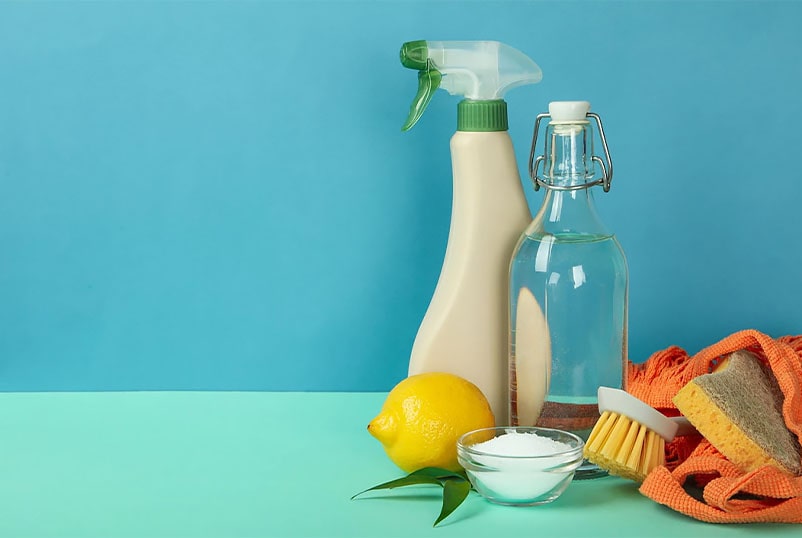
This is definitely my favorite method and one of the simplest ones I’m using!
For this one, we’ll have to prepare a baking soda & vinegar solution that we’ll then use as a cheap and efficient cleaning agent.
The proportions in the mix should be: 1 part of baking soda for 2 parts of vinegar. So, for example 2 spoons of baking soda mixed with 4 large spoons of vinegar. You can experiment with the proportions, ideally all the baking soda should dissolve in vinegar.
After you mix the ingredients, you will notice that the solution starts to fizz and foam. This is perfectly normal, and you can safely touch the cleaning solution you’ve just made.
Now, grab a cloth and use it to distribute the mix on the surface you want to clean and give it a proper rubdown, just as if you were using a regular cleaning agent.
The important thing here, is to use the mixture while its still bubbling.
Baking soda and vinegar can really work wonders, especially with grease that doesn’t want to come off your kitchen surfaces easily.
You can clean much more than solidified grease using baking soda & vinegar – it also does a great job when cleaning things in your bathroom – for instance your bathtub!
Trisodium phosphate (TSP) solution
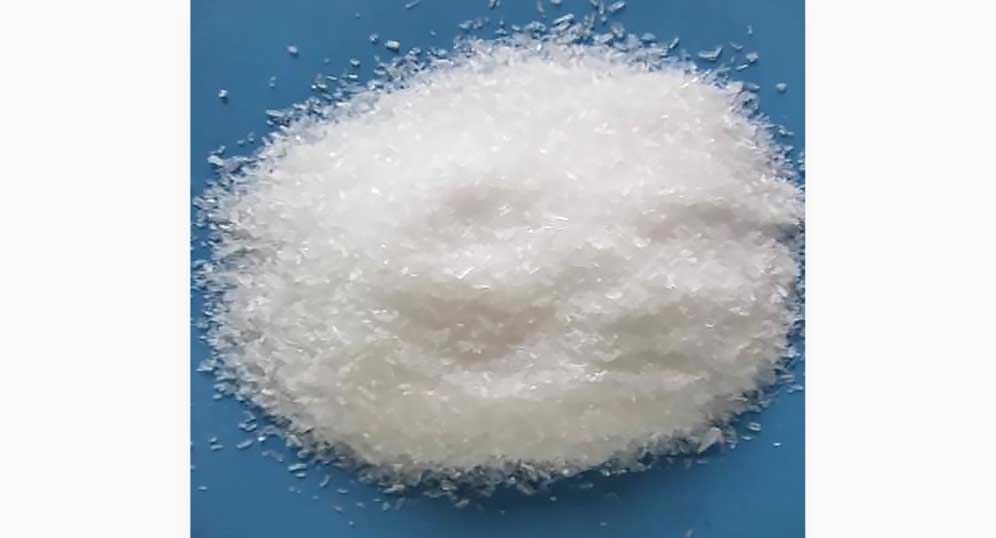
Warning: While the previously mentioned soda and vinegar solution was harmless, trisodium phosphate can actually cause serious irritation to the eyes, cause skin damage in direct contact and be potentially deadly when ingested. Always wear personal protection equipment including protective gloves and long sleeves when handling TSP, and refer to TSP cleaning safety precautions before attempting to use it.
Before attempting to clean using TSP, you should also check if TSP is legally available for purchase in your area (in some states, the use and distribution of TSP is banned). Then, check if the kind of surface you’re trying to clean is safe to clean using TSP.
The mix of trisodium phosphate and water is a highly potent cleaning solution that can aid you with removing dried grease from almost any surface.
For best effects, you should dilute 1/8 cup of TSP in about 1 gallon of water. Then, similarly to the previous method, you need to spread the solution on the area you want to clean using a cloth – be sure to wear personal protective gear and gloves for this one. Smaller amounts of TSP solution can be safely discarded in the toilet after use.
If TSP is legally purchasable and available in your area, make sure you get the “kitchen grade” trisodium phosphate for this. There might be other products labeled as “tech grade” trisodium phosphate – these should not be used for kitchen cleaning purposes.
Leave it for a few seconds and give it a while to start breaking down the grease particles. Then you can proceed with wiping off your stove top’s surface. Repeat this process as many times as needed.
Remember that surfaces are unfit for TSP cleaning and can be easily and irreversibly damaged if they come in contact with the TSP solution.
The last resort – the razor blade method
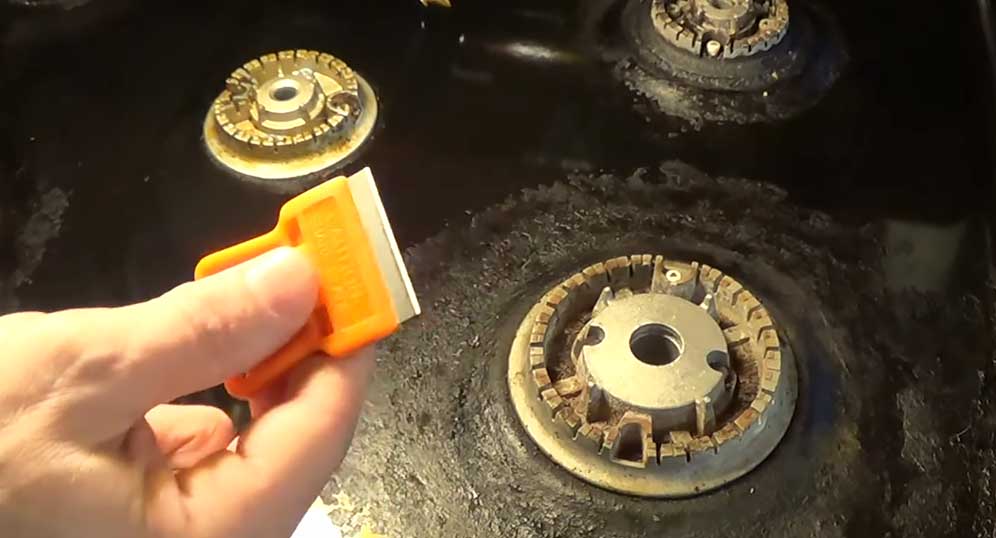
If everything else fails, and the grease on your stove top is in its black, dry and solidified form, there is one more thing you can do. Credit for this method goes to HowToWith GEO – check out his YouTube channel here!
This method is simply about using a blade to remove the dried grease from your stove top’s surface. You can use a razor blade or any sharp object to do that, however you should be very careful here.
While scratching off the solidified grease, be extremely careful not to scratch off the paint off your stove top surface. Even holding the blade at a wrong angle could cause you to ruin your stove top finish. Be mindful of that!
Don’t use a sole razor blade without any casing either, as it could easily injure you during the cleaning process. Also, don’t attempt to use your kitchen knives for that – you can easily damage them beyond repair if you use them for scratching off the grease residue.
After you’ve finished removing the topmost layer of the solidified grease, you can proceed with the previously mentioned cleaning methods to finish up the cleaning process.
Pictured well by HowToWith GEO over on YouTube, this method involves quite a lot of tedious work, however it can yield great results if you’ve got some patience and skill.
Stove top grease cleaners / grease removers
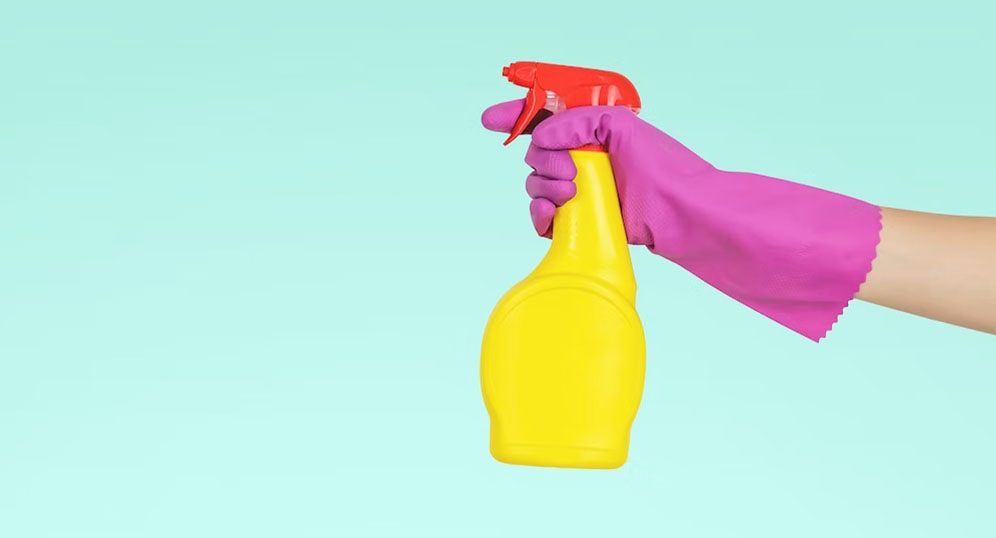
Are there any kinds of commercial stove top grease cleaners or grease removers? Well, if you’re looking for an even faster way to remove grease from your stove top, there are quite a few.
The Goo Gone Degreaser for one, is one of the most popular ones out there. If you want a ready and tested solution for removing grease from your stove top fast and with ease, we recommend you to get one of these:
| Grease removers on Ebay: |
How to easily protect your stove top from grease residue?
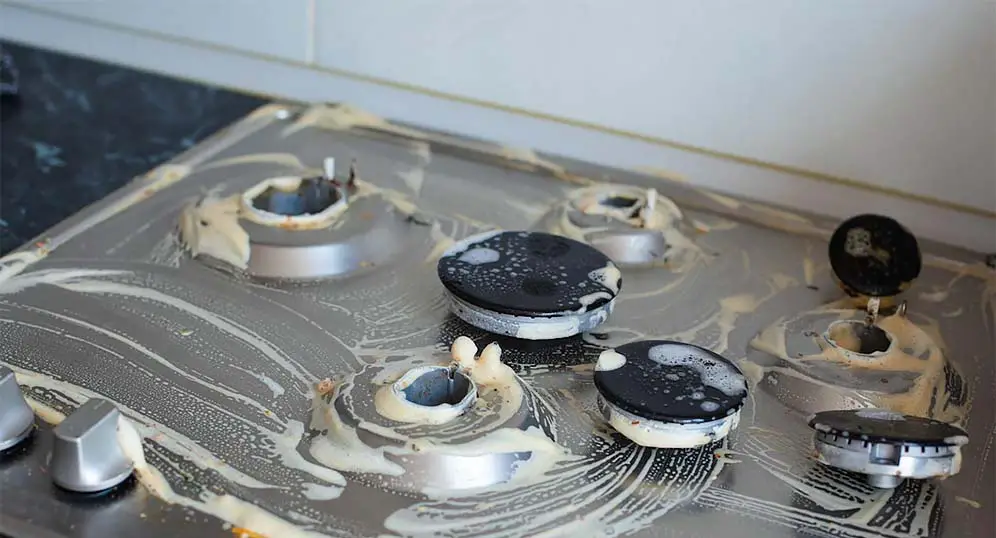
First and foremost, the most valuable tip here is to never let the grease solidify in the first place. After cooking, wait until the grease residue on your stove top (and the stove top itself) is warm but not hot anymore.
When the grease residue is still at the right temperature, most of the time it can be easily removed with a regular paper towel, as it will simply soak into the towel’s surface. It can then be quickly discarded into a trash can.
If you let your greasy stove top cool down completely, the grease will start to solidify and it will be much harder to remove. Choose the right moment to clean and make sure you don’t burn yourself – hot grease can easily cause injuries so be careful.
We hope you enjoyed this little stove top cleaning guide. If you have any further questions, do not hesitate to ask us in the comments below!


